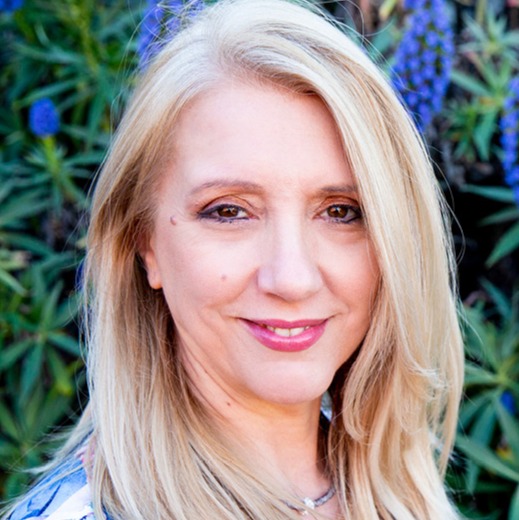
Nelson Mandela turned 93 years of age a few days ago in South Africa and 12 million school kids sang “Happy Birthday” early in the morning on that day. In the meantime, a colleague of mine shows me one of his famous quotes: “As a leader, I have always endeavored to listen to what each an every person in a discussion had to say before venturing my own opinion.”
This made me reflect on Mandela’s leadership traits and the things he intuitively did to get along with others. He certainly knew how to tap into someone’s creative thinking probably without knowing how motivated our brains get when we are able to articulate our thoughts.
A short time ago, while running some focus groups, a manager said to me “I would feel better if people would listen to my ideas”.
Such a short statement describes what actually happens to people when they create something and they can express it.
Being creative brings novelty and the brain likes it. It comes with extra doses of dopamine, called the chemical of desire. In today’s workplace creativity makes the difference between companies that get ahead and those who don’t.
Understanding how to foster moments of insight is the basis for getting ahead and differentiating from competitors.
Mark Jung-Beeman (2008), an expert in the topic of insights, says that:
“60% of people solve problems through an insight experience. An insight comes from nowhere, it is sudden and surprising.”
It is like a quantum leap of creativity.
For this to happen, the exchanges of electrical impulses need to go from beta to alpha. Alpha waves manifest when we relax, when we take our mind off our busy moments.
Alpha waves have been measured taking place 1.5 seconds before a moment of insight. In these moments there is a huge activity of gamma waves, the fastest waves our brain experience. This tell us that to have a creative moment we need to be able to relax first, that is why, going for a walk, having a shower or taking a ferry ride can be so stimulating.
Helping staff to take time out is actually a good investment for the business, they feel reenergized and in those free moments of unconscious processing, is when companies could generate the gems of “outside the square” thinking.
As Hugh MacLeod (MacLeod, 2009), a speaker on creativity says,
“Good ideas alter the equilibrium of power in relationships. That is why every person with a new idea faces resistance and people stop listening.”
Involving everyone and asking them to be creative and take the time for it, activates the brain in a way totally different to the problem solving methodology used by most people within the corporate environment.
While talking about creative thinking with a friend of mine, who is an actor, writer, director and also a business consultant, he made a very clear point about the way organisations look at creativity. In the arts industry, it is accepted that everyone has a license to be creative. Creativity is not questioned at all.
I believe that in business there is a need to reframe this concept. Creative thinking does not have anything to do with painting a picture, writing a book or a song.
Everyone can be creative in their own right. By understanding what triggers these aha! moments the levels of engagement, innovation and outcomes can certainly benefit the people involved and their organizations.
These Stories on Innovation

Founder & CEO
About my Brain Institute
Scientist, educator, author, speaker, coach, award-winning leadership specialist, filmmaker and creator of the i4 Neuroleader Model & Methodology.
Silvia's scientific background and curiosity about the human brain led her to a decade long journey of research into optimal brain functioning and the application of neuroscience in leadership and daily life. Her past and current roles have uniquely prepared her for the current undertaking, that of leadership activist & change agent.
Silvia Damiano founded The About my Brain Institute in 2009, with the purpose of democratising leadership & neuroscience. She has a passionately held belief, that leaders in our 21st century global economy and their organisations must radically change long-held ideas of what constitutes effective leadership
In her ground-breaking books ‘Leadership is Upside Down’, ‘Brain-Friendly Leadership’ and the 2018 documentary ‘Make Me A Leader’, Silvia provides both compelling evidence and explores the importance of leadership in our personal and professional lives and what it takes to develop the human behind the leader.
Silvia has worked in different countries, across many industries, helping teams and organisations improve business performance. Silvia’s clients have described her as a passionate, dynamic, a highly experienced speaker and master facilitator on the topics of Emotional Intelligence, Cultural Change, Neuroleadership & Engagement.
Silvia is passionate about leaving a legacy of well-rounded leaders who can act and decide in a way that better serves humanity. Her clients include Microsoft, Australian Stock Exchange, NSW Government, VISA, Fuji Xerox and Manpower amongst many other global companies.
Monday to Friday
9:00am - 5:00pm (AEST)
Sydney, Australia
We reply within 48 hours!
General Business Enquiries:
hello@aboutmybrain.com
Technical Support:
support@aboutmybrain.com
No Comments Yet
Let us know what you think